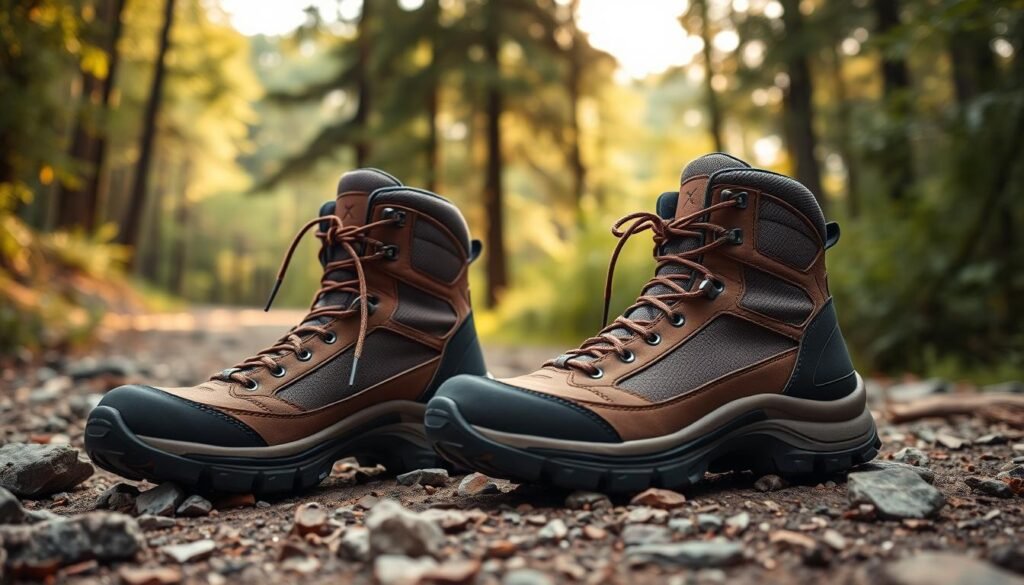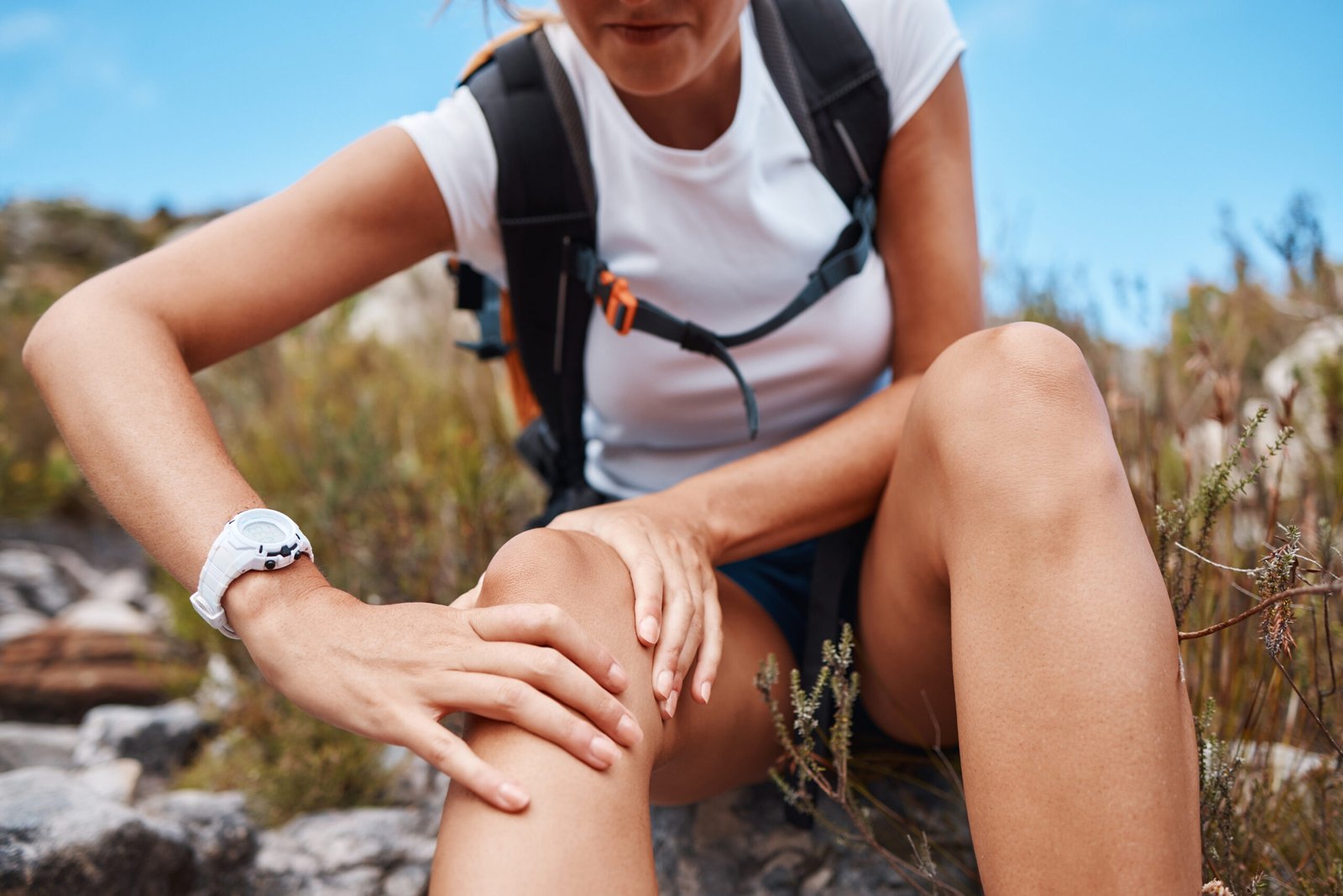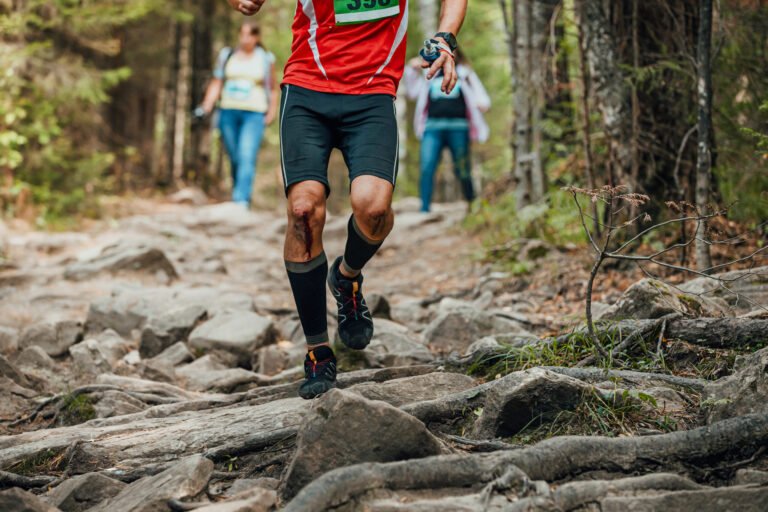Knee Pain on Descents: Protecting Your Joints on Steep Trails
Learn how to alleviate Knee Pain on Descents with our expert techniques for joint health and protection on steep trails.
Did you know that descending steep trails forces your legs to handle up to seven times your body weight? Harvard Medical School research reveals this shocking truth about downhill hiking – a favorite activity for millions that often comes with hidden costs. Let’s talk about knee pain on descents.
While uphill climbs get most of the attention, it’s the return trips that create unique challenges. Your joints face dramatically different stresses when moving downward, requiring specialized strategies most outdoor enthusiasts never learn. This biomechanical puzzle explains why so many hikers experience discomfort after tackling rugged terrain.
Proper trail techniques aren’t just about comfort – they’re about preservation. Every step down a mountainside sends shockwaves through cartilage and connective tissues. Without smart adjustments, repeated impacts can lead to long-term issues that shorten your hiking career.

This guide reveals science-backed methods to protect your body while enjoying steep adventures. Discover how equipment choices, movement patterns, and targeted conditioning work together to reduce joint strain. You’ll learn practical solutions that go beyond basic advice, helping you maintain peak performance trail after trail.
The best part? These strategies require no special gear or extreme fitness levels. Whether you’re a weekend warrior or seasoned backpacker, our actionable tips will help you descend with confidence – and keep exploring for years to come.
Knee Pain on Descents: Causes and Prevention
Steep downhill hikes challenge your body in ways flat terrain doesn’t. Gravity pulls you forward while muscles work overtime to control momentum. This combination multiplies stress on joints – especially those critical hinge points absorbing each step.
Understanding Joint Pressure on Downhill Trails
Your legs become shock absorbers during descents. With every downward step, body weight transfers through joints at angles rarely experienced elsewhere. Rocky paths force sudden twists that strain tendons and ligaments. Over time, repetitive impacts can inflame protective tissues.
Common hiking-related injuries include:
| Condition | Primary Cause | Prevention Tip |
|---|---|---|
| Bursitis | Inflamed cushioning sacs | Shorter strides |
| Patellar Tendinitis | Overused kneecap tendon | Strengthen quadriceps |
| IT Band Syndrome | Swollen hip-to-knee tendon | Foam rolling |
Recognizing Early Warning Signs of Knee Strain
Persistent discomfort below the kneecap often signals trouble. Sharp twinges when navigating rocks suggest tendon irritation. Swelling or warmth around joints indicates inflammation needing rest. Ignoring these signals risks chronic damage – cartilage wear accelerates when protective tissues weaken.
Smart hikers track three key markers:
- Morning stiffness lasting over 30 minutes
- Clicking sounds during movement
- Difficulty fully straightening legs
Techniques for Joint Health on Steep Trails
Mastering downhill terrain requires more than endurance – it demands precise movement strategies. Proper form transforms your body into a shock-absorbing system, dispersing forces that otherwise concentrate in vulnerable areas.
Optimizing Body Weight Distribution and Hiking Form
Lean slightly forward from the ankles, keeping your weight centered over your legs. This stance prevents backward leaning, which multiplies pressure on joints. Maintain soft, bent knees – locked joints transfer impacts directly to cartilage.
Shorten strides and plant feet firmly with each step. Imagine rolling from heel to toe like a wheel descending smoothly. For extreme slopes, use zigzag patterns to reduce direct downward force. These angled steps distribute impact across multiple muscle groups.
Strategic Use of Trekking Poles for Reduced Impact
Trekking poles become extensions of your arms when adjusted properly. Set them 6-8 inches shorter than uphill length – this allows natural arm swings while bearing 15-20% of your body weight. Plant poles slightly ahead during descents to create stable tripod positions.
Pair pole techniques with rhythmic breathing to maintain steady oxygen flow to muscles. Research shows proper hiking techniques can reduce joint loads by up to 25% on steep terrain. Take brief pauses every 20 minutes to reset posture and prevent fatigue-related form breakdown.
Selecting the Right Gear for Joint Support

The right hiking boots act as your first line of defense against joint strain. Quality footwear transforms uneven terrain into manageable surfaces while protecting vulnerable areas from repetitive impacts. Let’s explore how smart gear choices create safer hiking experiences.
Footwear Fundamentals for Trail Safety
Properly cushioned boots absorb up to 40% of ground forces before they reach your legs. Look for midsoles maintaining their shape after 300+ miles – compressed cushioning transfers shock directly to joints. Test traction by pressing thumbnails into outsoles; deep lugs should resist sliding.
| Feature | Purpose | Recommendation |
|---|---|---|
| Arch Design | Aligns foot mechanics | Match your natural arch shape |
| Toe Box | Prevents crowding | 1/2 inch front space |
| Heel Counter | Reduces slippage | Firm but not rigid |
Enhancing Support Through Accessories
Custom insoles correct alignment issues affecting 73% of hikers according to Appalachian Trail Conservancy data. Try these lacing methods for better fit:
- Surgeon’s Loop: Locks heels without pressure points
- Window Lacing: Relieves top-foot tension
- Toe-Relief: Creates space for natural splay
Replace boots every 500-700 miles or when tread patterns lose definition. Break in new footwear with short walks before tackling steep trails – your feet will thank you later.
Effective Home Exercises and Flexibility Routines
Building resilient joints starts long before hitting the trail. Strategic workouts prepare your body to handle steep terrain by strengthening critical support systems. Focus on three key areas: muscle endurance, joint alignment, and tissue elasticity.
Targeted Strength Training for Knee Stability
Wall sits develop quadriceps endurance – the foundation for stable movement. Press your back against a wall with knees bent at 90 degrees. Hold for 30 seconds, repeating 4-5 times. This mimics the sustained pressure experienced during descents.
Banded monster walks improve lateral control. Place a resistance band around your ankles. Step sideways in a partial squat, maintaining tension. This strengthens hip muscles that stabilize joints on uneven ground.
Hip raises activate glutes to prevent pelvic tilt. Lie on your back with knees bent. Lift hips upward while squeezing buttocks. Perform 3 sets of 10 reps. Strong glutes reduce strain on leg muscles during downhill steps.
Simple Stretching Techniques to Relieve Tension
Hamstring stretches maintain crucial flexibility. Sit with one leg extended, gently leaning forward until you feel tension. Hold 20 seconds per side. Tight hamstrings alter walking patterns, increasing joint stress.
Quadriceps stretches prevent muscle imbalances. Standing upright, pull your heel toward your buttock. Keep knees aligned. This counteracts the repetitive motions that tighten thigh muscles.
Calf stretches protect foot mechanics. Face a wall with one foot back. Press the heel down while leaning forward. Flexible calves improve shock absorption with each step.
Final Steps for a Pain-Free Journey Downhill
Effective trail navigation combines preparation, technique, and timely care. Cold therapy using snow packs reduces swelling during flare-ups, while anti-inflammatory medications offer temporary relief. For persistent discomfort lasting over 48 hours, seek professional evaluation to rule out tendon damage or cartilage issues.
Physical therapists analyze movement patterns to address muscle imbalances – a key factor in recurring strain. Customized exercise programs build strength where needed most, creating natural joint protection. Consistency matters: 15-minute daily routines yield better results than weekly marathon sessions.
When returning to trails after recovery, start with gentle slopes and shorter distances. Gradually increase difficulty as tissues adapt. Long-term joint health thrives on varied terrain exposure paired with proper footwear and pole techniques.
Remember: Small preventive actions today prevent major setbacks tomorrow. Stay proactive with conditioning, listen to your body’s signals, and enjoy countless adventures with confidence.
For more great articles on hiking go here.


